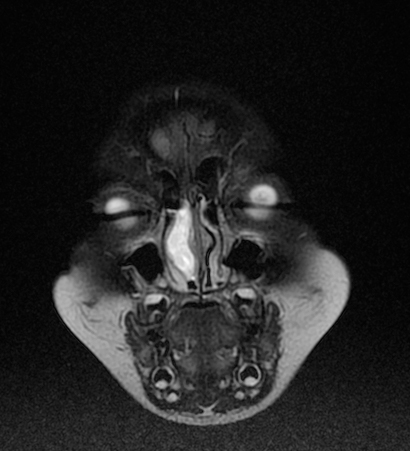Nasal glioma
|
WikiDoc Resources for Nasal glioma |
|
Articles |
|---|
|
Most recent articles on Nasal glioma Most cited articles on Nasal glioma |
|
Media |
|
Powerpoint slides on Nasal glioma |
|
Evidence Based Medicine |
|
Clinical Trials |
|
Ongoing Trials on Nasal glioma at Clinical Trials.gov Clinical Trials on Nasal glioma at Google
|
|
Guidelines / Policies / Govt |
|
US National Guidelines Clearinghouse on Nasal glioma
|
|
Books |
|
News |
|
Commentary |
|
Definitions |
|
Patient Resources / Community |
|
Patient resources on Nasal glioma Discussion groups on Nasal glioma Patient Handouts on Nasal glioma Directions to Hospitals Treating Nasal glioma Risk calculators and risk factors for Nasal glioma
|
|
Healthcare Provider Resources |
|
Causes & Risk Factors for Nasal glioma |
|
Continuing Medical Education (CME) |
|
International |
|
|
|
Business |
|
Experimental / Informatics |
Editor-In-Chief: C. Michael Gibson, M.S., M.D. [1]
Overview
Nasal gliomas are composed of dysplastic glial tissue, and are congenital nonneoplastic lesions best categorized as heterotopia. Nasal gliomas occur near the root of the nose (where the cranial portion of the nose joins the forehead). A nasal glioma may be connected to the brain by a stalk of tissue in up to 15% of cases, but the stalk does not contain a direct fluid-filled tract that communicates with the subarachnoid spaces; therefore, a nasal glioma is distinct from an encephalocele. Nasal gliomas are intranasal in 30% of cases, extranasal in 60%, and mixed in 10%. Extranasal gliomas are usually seen in a paramedian location at the bridge of the nose external to the nasal passage , whereas intranasal lesions are usually located within the nasal passage medial to the middle turbinate bone. Surgical resection is used to treat these lesions.
Nasal gliomas are often isointense relative to normal brain at MR imaging, which is the imaging modality of choice. High-resolution surface coil MR imaging is often useful in demonstrating the intracranial stalk.





